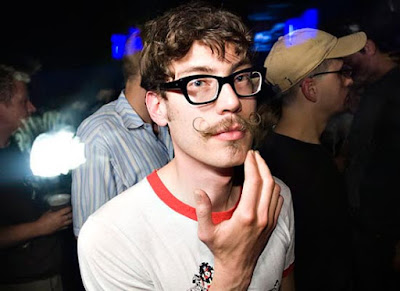New York City is so much about the subway. This is especially true for those not among the Seraphim who orbit Union Square in a lazy, half-mile radius, and instead ride the 4 train to far-off, stone-age Brooklyn after dark.
This summer, I’m living in the Prospect Heights neighborhood of Brooklyn in a renovated brownstone with two roommates and a backyard. I’m interning at an arts magazine called BOMB in Fort Greene (also a neighborhood of Brooklyn), which is about 15 minutes from my apartment. Convenient as this is for me during the week, it’s relatively difficult to get anyone who doesn’t live here to come “all the way” out to Brooklyn, or, for that matter, “all the way” up- or downtown in Manhattan.

A map of the world.
The city comprises five boroughs, which are, in descending order of outside interest: Manhattan, Brooklyn, Queens, the Bronx, and Staten Island. Contrary to the understanding of many Manhattanites, people do inhabit each of them. They might as well not, however, after 10 PM and on weekends, since subway service in the “outer boroughs” drops off so significantly — in my case, from six trains within reasonable walking distance of my apartment (three local, three express) to two (both local).
Rude.
People seem to realize the relative difficulty of getting to or from Brooklyn, much less around within it, and so social venues often become a numbers game – four people in the East Village beats two, well, anywhere in Brooklyn. Williamsburg and Greenpoint (north Brooklyn) are in on this game, too, it seems, as each could not be easier to get to from Manhattan or more difficult to get to from the rest of Brooklyn – you either have to take a bus, or hop on the G train, which travels in a giant, inefficient zig-zag and connects to essentially no other trains. Still, these two neighborhoods are about as deep into Kings county as most people who live elsewhere might care to venture.
(At this point, I feel I should admit something: I have never been to Williamsburg, and I have never been to Greenpoint. Out of some combination of bus-aversion and general indignance at Manhattan-Brooklyn power dynamics, I simply haven’t gotten around to it.)

(Also, mustaches make me secretly very uneasy.)
In stark contrast to the legendarily hipsterized plaid shirt Mecca of Williamsburg, Prospect Heights is not high on Brooklyn’s gentrification agenda (and it does have one). It comprises of a number of blocks sort of squished between Prospect Park to the south, double-income-no-kids-y Park Slope to the west, gentrifabulous Fort Greene to the north, and oddly divided black/Hasidic Crown Heights to the east, and itself has a largely Caribbean population.
I am myself what might be generally called “non-black,” and walking around Prospect Heights in boat shoes and skinny jeans, I stick out like a sore yuppie. Being a racial minority even just in the ten-block radius around my apartment has given me serious pause about the minority experience in America more generally, and for what must be the first time in my life, I have a constant sense of looking and being different in a very fundamental way.
Unlike the experience of non-white racial minorities amid a white majority, my presence as a white male among Hispanic-, African-, and Carribean-Americans carries with it no glow of social progress or achievement; nothing has been overcome. Seeing other trendy, white 20-somethings in my neighborhood is a reminder of the steady, uncomfortable trickle of underemployed college graduates into areas that have known poverty in a realer way than they (we, I) ever have or could. The more I consider it, the more I’m unable to discern whether my discomfort is self-awareness or condescension.
In my hours of subway travel in the past two weeks, I’ve spent considerable time attempting to affect an accurately “New York” attitude, at least outwardly; indeed, beyond learning to read the expansive subway map, it seems this is the most crucial skill a New Yorker must master. The most observably native among subway travelers seem at once antsy and bored to tears – an emotional range and most often expressed as a perpetual eye-roll. Sneering just slightly at passengers who look lost and saying ughhh in my head, I consider it an exercise in method acting.
Try as I might to look like I belong, once I step off the train and climb the stairs to the street, I remember the feeling. At the most basic level, no degree of anger-boredom in a subway car can disguise the very real nonbelonging I represent above ground. There’s no hiding, and I can tell I’m going to learn a lot just being here.

Nice post. I’m living in west Philly this summer and I feel you on the sense of fundamental difference. My internship here is in a black Muslim neighborhood – a pretty different demographic than that of our beloved college. I was TAing at a children’s film class at a Salvation Army community center the other day and I realized that I was certainly the only white guy in the building, and probably the only one within a five-block radius. It’s this weird combination of being an outsider and recognizing the privilege I usually take for granted. Definitely not a feeling I get much at Conn.